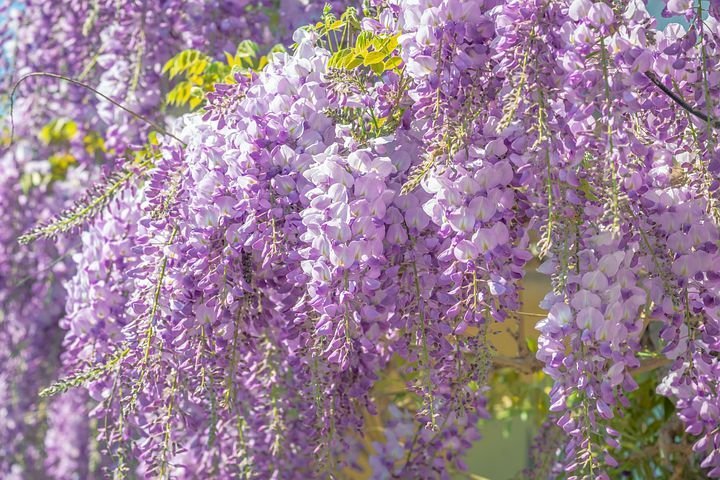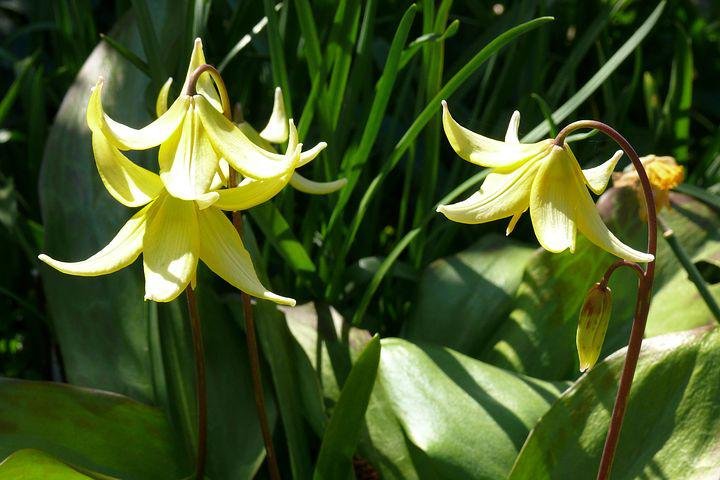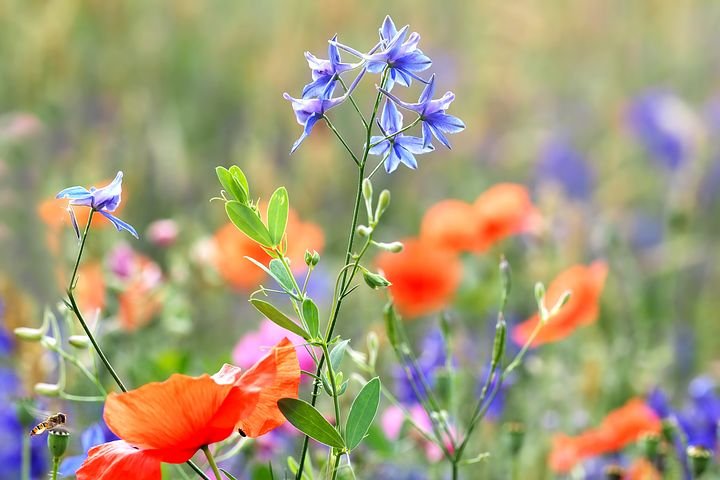Loam soil is a type of soil characterized by sand, silt, and a smaller amount of clay. It is the best soil type because it contains all three of these components equally.
Types of Loam Soil

1 . Sandy Loam Soil
Sandy Loam Soil is regarded as the best loam soil because of its good gritty texture without clods of clay or accumulations of rock. They are predominantly rich in size, most significant in size, and are just like tiny stones.
Characteristics of Sandy Loam Soil
- Sandy Loam Soil holds its shape but breaks apart when compressed.
- Sandy Loam Soil is less acidic and more alkaline.
- Sandy Loam Soil is reddish-brown
- Sandy Loam Soil cannot hold water; they drain the excess water in them, resulting in insufficient nutrition in plants, causing death. Frequent fertilization and excess watering are needed to boost plant growth.
- Sandy Loam Soil is classified into three types; fine sandy loam, sandy loam, and coarse Sandy loam.
2. Silt Loam Soil
Silt Loam Soil is the topsoil texture that consists of silt size particles (.05 to .002mm). Its nutrients provide the foundation for a fertile garden.
The type of plants that grow well in Silt Loam includes; shrubs, climbers, grasses, and perennials such as Mahonia, New Zealand Flax, etc. They also include Willow, Birch, Dogwood, and Cypress.
Characteristics Of Silt Loam Soil
- Silt Loam Soil is not grainy or rocky.
- It is created when rock is worn away by water and ice.
- It is slippery when wet.
- When pressed together, it forms rocks such as siltstone.
3. Clay Loam Soil
Clay Loam Soil is a mixture that contains more clay than other types of rock or minerals. It contains good plant nutrients that support most types of plants and crops.
Characteristics Of Clay Loam Soil
- The particles are tiny.
- Clay Loam Soil swells when it is wet and shrinks when dry.
- Clay Loam soil holds more water than other soil types.
- They are rich in potash and are deficient in phosphate.
What Is Loam Soil Used For?

Loam Soil is generally a mixture of about half sand and silt, with about 20% of the mix being clay. It is regarded as the ideal soil composition for plants.
Gardeners reveal Loam soil is best for their gardens because of its loose and crumbly texture and its ability to retain but drain water quickly.
Here are a few uses of Loam Soil;
1 . Raising Crops
Any plant type can thrive in loam soil without making significant changes or alterations to the soil consisting of silt, sand, and clay.
It is ideal for growing wheat, sugarcane, pulses, and oilseeds. Vegetables such as tomatoes, pepper, green beans, cucumbers, onions, and lettuce are not left out.
2. Planting Trees
Loam Soil texture helps roots spread rapidly, retain moisture and produce nutrients. This is one of the reasons why young trees tend to grow so well.
It supplies the trees with essential nutrients and absorbs the nutrients from additives. It also regulates the temperatures of the roots.
3. Growing Flowers
Flowers tend to thrive in good loam soil conditions. It provides excellent drainage to prevent the bulb from rotting, and the roots proliferate.
Properties Of Loam Soil
Loam soil consists of roughly 50% of soil solids, sand, silt, and clay. It also contains 50% pore spaces and water.
Loam soil contains more nutrients, moisture, and humus than sandy soil. They have better drainage and infiltration of water and air.
Loam soil also contains mineral particles, organic water, and air. These combinations determine its properties, such as texture, structure, porosity, chemistry, and color.
Characteristics Of Loam Soil
1 . Loam soil consists of three textural components, silt, sand, and clay. These components are mixed with organic matter, water, and air to make loam soil.
2. Loam soil comprises a high level of sand to resist compaction.
3. Loam soil can drain out the amount of sand in it.
4. Loam soil has good aeration levels.
5 . Loam soil can maintain nutrient levels.
Disadvantages Of Loam Soil
1 . Loam soil cannot hold nutrients which makes the soil fertile.
2 . Loam soil contains stones that may affect the harvesting of some crops.
3 . Loam is not a good option for plants that grow in dry soil, such as cactus.
4 . The soil is not suitable for areas where rainwater enters quickly.
Why Is Loam The Best Soil For Growing Plants?
Loam Soil is a mixture of 40% sand, 40% Silt, and 20% Clay. It bears more benefits and is easier to work with than other soil types. It is also beneficial for your garden.
1 . Good Infiltration
Loam soil is considered the best soil for good infiltration because it drains water and holds adequate moisture that gives room for enough air to reach the roots. It is advised that an adequate level of water should be infiltrated into the soil for maximum production.
2 . Drought Resistant
Loam Soil drains the water, so the excess water does not ruin the plant. It has a water-holding capacity of about 35-40% at the wilting point. As a result, the soil will remain moisturized and refrain from drought.
3. Warms Up Fast
If the Loam Soil is warm enough, your plants will grow faster and healthier during the growing season because the temperature affects seed germination and warms up faster than in other soils.
Best Plants For Loam Soil
1 . Wisteria

Wisteria is a large genus of climbing flowering plants related to the pea family. It prefers well-drained, fertile loamy soil rich in nutrients and organic matter.
2. Dog’s Tooth Violet

Dog’s Tooth Violet is also called trout lilies, and they are common in the woodlands of North Africa and Europe. It prefers well-drained loamy soil and cold temperatures.
3 . Delphinium

Delphinium is a large genus of flowering plants native to the Northern Hemisphere. The plants prefer loamy soil with full or partial exposure and cool, moist summers.
4 . Black-Eyed Susan

This Flower thrives best in a range of soils from loam to clay. They are a must-have in your garden because they are adaptable and require low maintenance.
5. Black Bamboo

Black Bamboo is also known as Phyllostachys Nigra, and it is native to the Hunan Province of China. It thrives well in moist loamy soil and can adapt to many soil conditions.
Vegetables And Crops Suitable For Loam Soil
Loam Soil is an ideal soil for growing many crops and vegetables, including wheat, cotton, pulses, tomatoes, peppers, green beans, cucumbers, onions, and lettuce. Others include sweet corn, okra, eggplants, carrots, strawberries, blackberries, and blueberries.
Is Loam Soil And Topsoil The Same?
Loam and Topsoil are often used to refer to the same soil, but they aren’t the same. Topsoil is described as a dark Rich, friable soil that can serve all landscape’s needs. It is the highest layer of the soil which may be up to 12 inches deep, with its surface later than most landscapes, usually darker in color.
Loam is a subcategory of Topsoil. It contains a balanced amount of Sand, Silt, and Clay. It is used to describe the texture of the land and has little or no organic matter but good retention of water and nutrients.
The difference between Loam Soil and Topsoil is quite similar. Topsoil refers to the location of the soil, while Loam Soil refers to the soil quality.
Frequently Asked Questions
How Can You Tell If Soil Is Loam?
There are many ways to tell if your Soil is Loam. Here are a few;
- If given a firm squeeze when moist and it holds back its shape.
- If given a light poke and it crumbles.
- If it has a gritty texture.
What Color Is Loam Soil?
Loam Soils are usually brown or black.
How Do I Know What Kind Of Soil My Foundation Is?
Different types of Soil will affect your building foundation. However, it is essential to know the kind of soil your foundation is built on to affect its construction.
When looking for an ideal soil type for your foundation, Loam Is regarded as the best option. It does not shift, expand or shrink. It handles the presence of water very well.
What Type Of Foundation Is Suitable For Loam Soil?
Foundation is the structure that transmits loads on the structure’s surface safely and straight to the ground/subsoil. In designing the foundation, the superstructure and the number of floors to be constructed need to be considered.
However, the recommended foundation for loamy soil is the isolated pad footings.
